Five powerful F2P monetization patterns that use behavioral economics in UX design

Behavioral economics is an amazing area of economics, exploring the psychology of consumer decision making.
For many years, I have tested and researched many mobile games and applications of various genres. I like to deconstruct and analyze various aspects of digital products: adaptation, basic cycle, use of social networks, metagames, PvP, etc. Monetization patterns were especially interesting to me, because I received an economic education.
The article presents five unconventional monetization patterns, each of which is based on the strict principle of behavioral economics. They all differ from the usual, but they work incredibly well.
But before proceeding to the patterns, let's look at what the principles of behavioral economics are about and how they apply to these unconventional patterns.
')
What is “behavioral economics”?
This is a field of psychology that studies the processes of making economic decisions by individuals and organizations.

Consumer costs are inversely proportional to the amount of discomfort from costs, reflecting the level of discomfort experienced after parting with one dollar (or another currency unit).
Behavioral Economics (PE) divides consumers into 3 separate categories according to the level of discomfort experienced when spending is made.
- Misers (24%): The level of discomfort among these buyers is below average.
- Carefree (60%): spend moderately.
- Spent Fat (15%): Discomfort is above average.
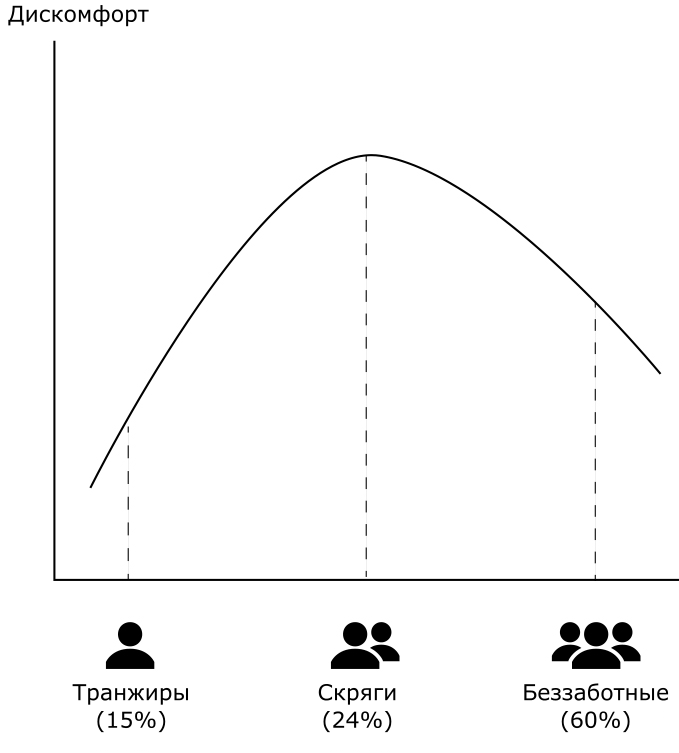
Research confirms that almost a quarter of consumers belong to “miser”. These consumers have a very low cost threshold due to their high sensitivity to discomfort. This distribution in free-to-play games is even more distorted: only 1% of the player base makes some purchases!
Question: how to reduce discomfort from the costs of consumers “miser”?
The answer depends on several principles found by PE that make the cost of the product less uncomfortable:
1. Fake Effect: price fixing
Consumers added to the cost options influence consumer decision making.
The choice is often made in relation to the proposals made, and not on the basis of absolute preferences. Technically, the effect of "fake" is called "choice with asymmetric dominance." It occurs when the preference of one option to another becomes the result of adding a third (similar, but less attractive) option.
This video briefly explains the effect of "fake" (in English):
In general, if consumers have a choice of buying a large glass of popcorn for $ 7 and a small one for $ 3, then they choose according to their usual preferences. But if you add the third, medium, option for $ 6.5 (which is even slightly better in terms of cost / volume compared to the cheapest option, but cheaper than the most expensive one), then the consumer’s attention will shift from the cheaper option to the comparison between “snag” and the most expensive option .

Consumers feel that they can get much more benefits by paying just a little more , so they consider it right.
Anchors distract consumers' attention from options that companies seek to sell, while at the same time leaving a sense of satisfaction from the fact that they have "tricked" the system.
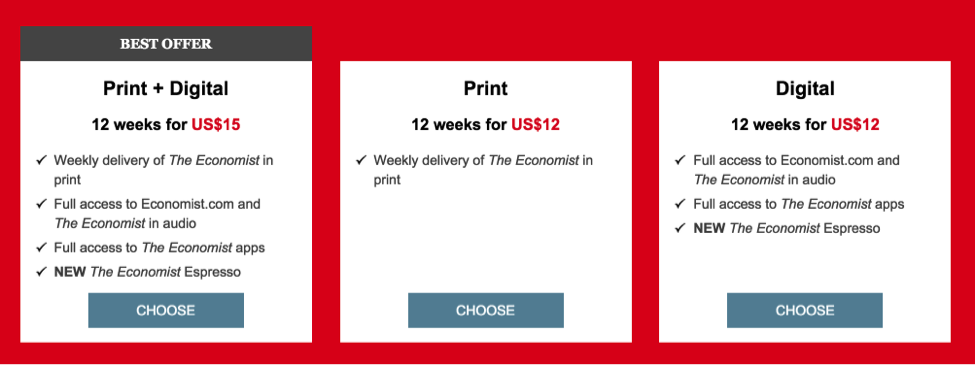
In this example, options B and C are in fact “tricks” that attract to the imposed option A, which in just 3 extra dollars gives access to the contents of the other two options. Of course, for consumers, the choice is obvious.
In the shops of many mobile games this type of fixing “snag” is used for selling expensive goods. For example, in Diamond Digger Saga and Farmville 2 stores, only three options are shown that use “tricks” to manipulate player preferences.
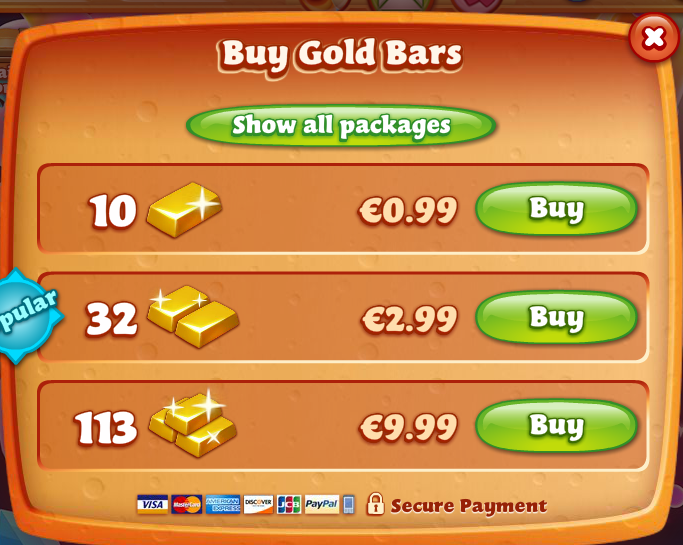

This reduces the selection error and does not overload the players with a large number of options that can lead to a "paralysis of choice", and helps the conversion by fixing prices.
Notice that on the screens above there are “More offers / packages” buttons, in which 5-10 offers are available, but only three are visible for the “snag” effect.
Do you need more proof? See how this strategy is used in Hearthstone .
2. Reciprocity: the psychology of free samples.
Reciprocity is a social norm involving non-monetary exchange between people. In general, it consists in responding to an action with another similar action.
This is one of the basic laws of social psychology . He says that in many social situations we repay what we have received from others. In other words, if someone did you a favor, you will most likely do likewise.
In charity, reciprocity is often used in the following way: gifts are put into letters asking for help. Supermarkets are trying to encourage people to buy more by offering free samples.
Below are the standard for supermarket paintings. Companies offer free samples of their products, drinks and food in order to whet the appetite of consumers without any initial investment.

Cafes and shops around the world lure consumers with small samples of their products. This model includes trial versions of software.
Question: how can this model from the real world be used in virtual in-game stores?
In popular games of the "three in a row" genre of the King.com company, this model and psychology are used with advantage:
Pet Rescue Saga (King.com)
In the game Pet Rescue Saga, from the very beginning, the model used in other “three in a row” games is used, in which the player can unlock useful bonuses as the game progresses. He gets a few bonuses for PROBE, and when they run out, the game offers to buy more.

Pet Rescue has a lot of bonuses, but the most common ones, such as BOMB or ROCKET, appear on several levels. They can not be bought in the game.
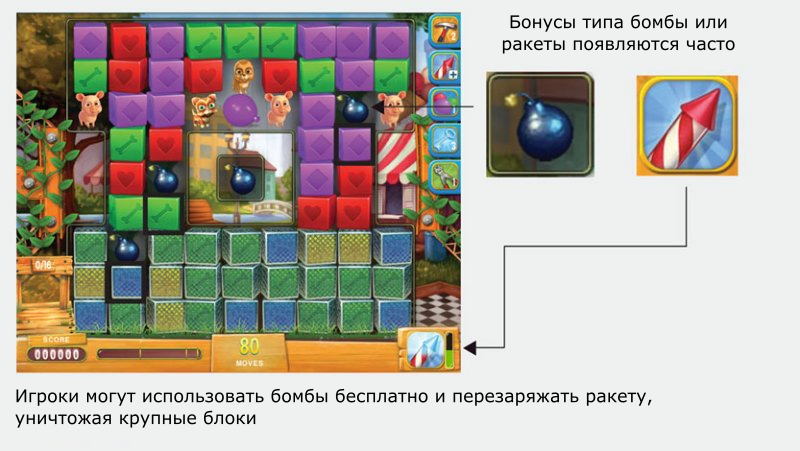
If the player loses at the earlier levels, the standard Attempts have ended screen opens with an offer to buy 5 more attempts.

But this initial behavior changes over time. When players advance further in the game, messages on the loss screen become offers to buy new types of bonuses. Those that could not be obtained initially and only available on the screen of loss.

You may ask: what’s so unusual, they just replaced the offer to buy 5 attempts for a couple of random bonuses?
... "random"? Are you sure?
Take a closer look. New offers are MORE POWERFUL versions of existing bonuses (those used by the player for free)!

What is going on? Let's demonstrate clearly:
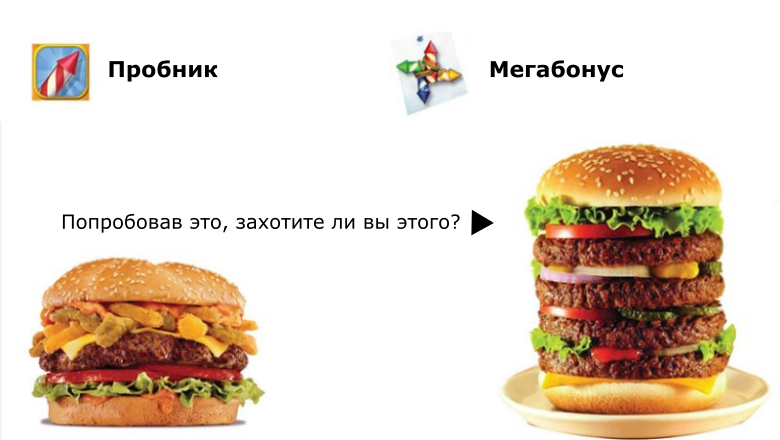
Other King.com games also use this model frequently. I reviewed it in another article that can be read here .
3. Counter offer: bargaining
Behavioral economics strategies use bargaining to reduce discomfort from buying. Bargaining significantly affects the decision-making process of consumers.

Bargaining and counter offers have been used for many centuries. People love to bargain before making a purchase. Both buyers and sellers understand this and leave at a specified price for goods a margin for a significant margin.
Even in the era of fixed prices, buyers always compare prices to other stores and websites, such as Amazon, Macy's, and others, to find the best deal and feel the choice.
Question: how can this model from the real world be used in virtual in-game stores?
Recently, this principle is used in many f2p games. Below is an example from the typical farm match 3 game Farm Heroes Saga. When a player ends up trying to complete a level, he receives a purchase offer:
5 attempts for 9 gold bars to continue without losing the progress achieved.

However, if a player does not buy, the next time on this screen he gets a counter offer with a discount!

Note that the price remained the same - 9 gold bars - but the offer was sweetened by giving the players an additional benefit with a bonus package that is more expensive than the previous offer!
Important: notice that the new offer is presented as an option (instead of one button with the price, two are shown). This allows players to understand, on a subconscious level, that they are being offered a counter offer.
Notice how minor changes in the size and crossed out prices (9 instead of 15 gold bars) help impose a new offer at a discount.
4. The effect of ownership: people attribute more value to what they have
In psychology and behavioral economics, the ownership effect (also known as “loss aversion”) is the hypothesis that people attribute greater value to things just because they own or create them.
Slotomania uses a unique monetization model based on the effect of ownership. It is used as an effective conversion mechanism, forcing people to consider their choice reasonable.
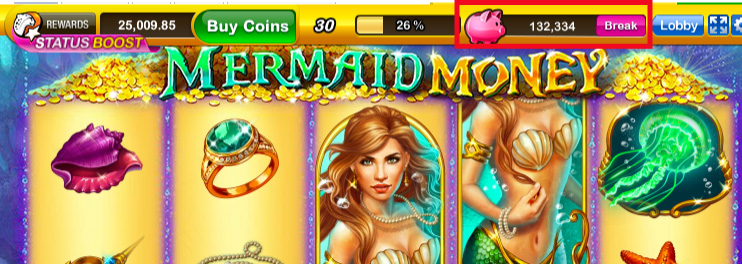
Note the “pigs” icon, which is part of the Slotomania interface (see image above), similar to the mental model of the piggy bank.
Question: how does the model work with the "piggy bank"?
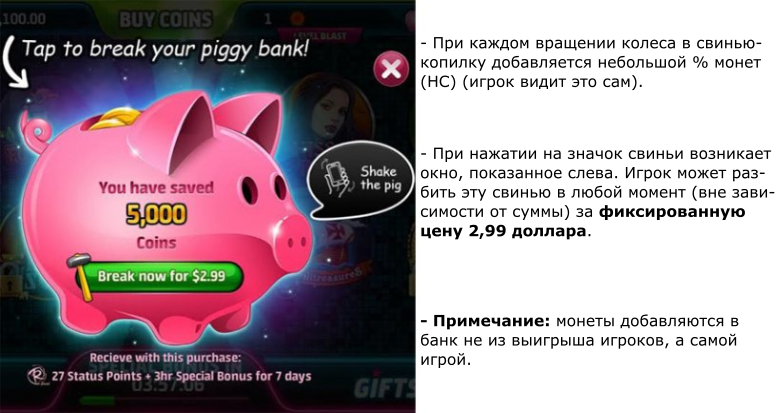
In essence, Slotomania creates an in-game purchase (IAP), replicating the mental model of a piggy bank from real life.
The player sees that his efforts = Win + Time spent in the game = <number of HC inside the "pig".
But how does this make the player feel that the purchase is reasonable or different from other IAPs? Why should a player buy or prefer this offer?

For $ 3, the store offers 45,000 coins, a temporary share for $ 2.99 offers 51,750 coins. But breaking the pig gives only 5,000 coins. Right?
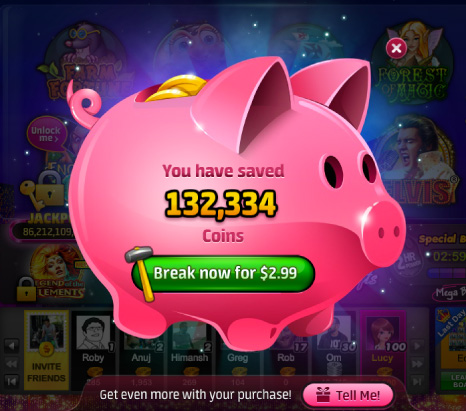
However, if the player continues to play, the piggy bank continues to increase (every turn of the lever and every second spent in the game adds free coins to the pig), and, as you see,
Now she offers 132,334 coins for just $ 2.99! This is more profitable than the cheapest offer in the store (45,000 coins for $ 3) and a temporary share (51,750 coins for $ 3). The difference is huge, and the offer looks like a bargain!
PS A player can break a piggy bank for a fixed $ 2.99 at any time of the game, regardless of the amount accumulated there.
From the point of view of psychology, a player feels the amount in a piggy bank as a result of his own efforts. The amount in the bank = the time spent in the game. It creates a psychological connection.
5. Supermarket psychology: show consumers what they should see!
When a person enters the supermarket, he usually seeks to spend as little money as possible. But supermarkets need it to spend as much as possible, and this is reflected in the layout of the stores.
And that's how they do it. In any supermarket or shopping center, the most necessary or everyday goods are in the back of the store, so that consumers can pass by expensive and fashionable goods that they did not plan to buy, but as a result buy.
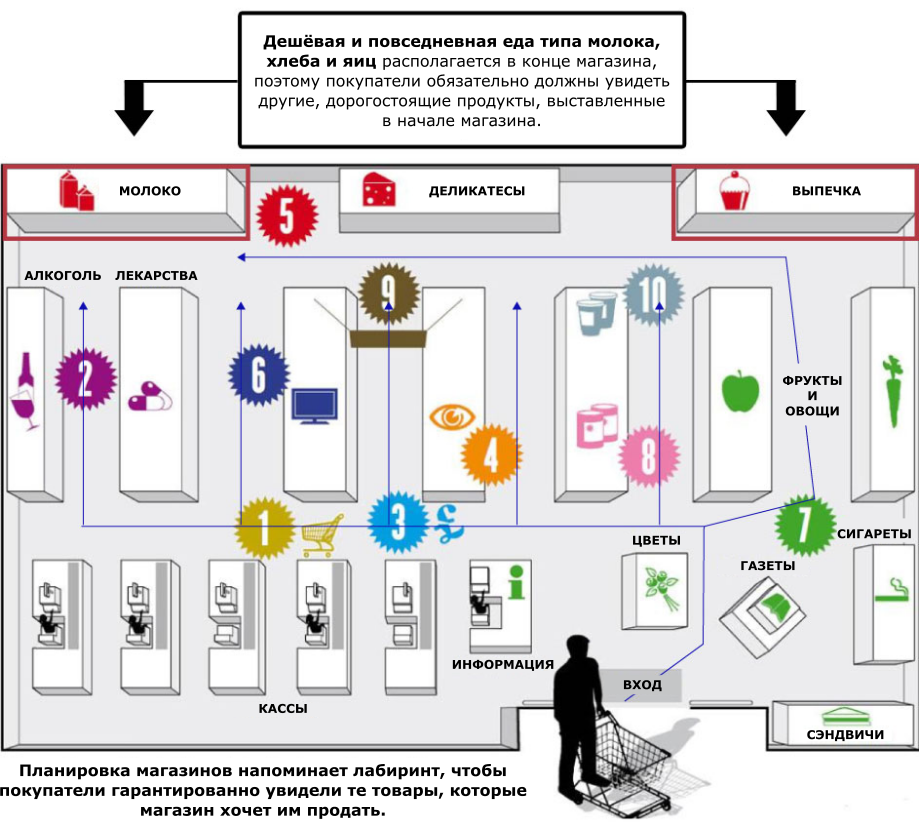
This layout is used in most supermarkets around the world.
Question: how can this model from the real world be used in virtual in-game stores?
Similarly implemented Marvel Contest.
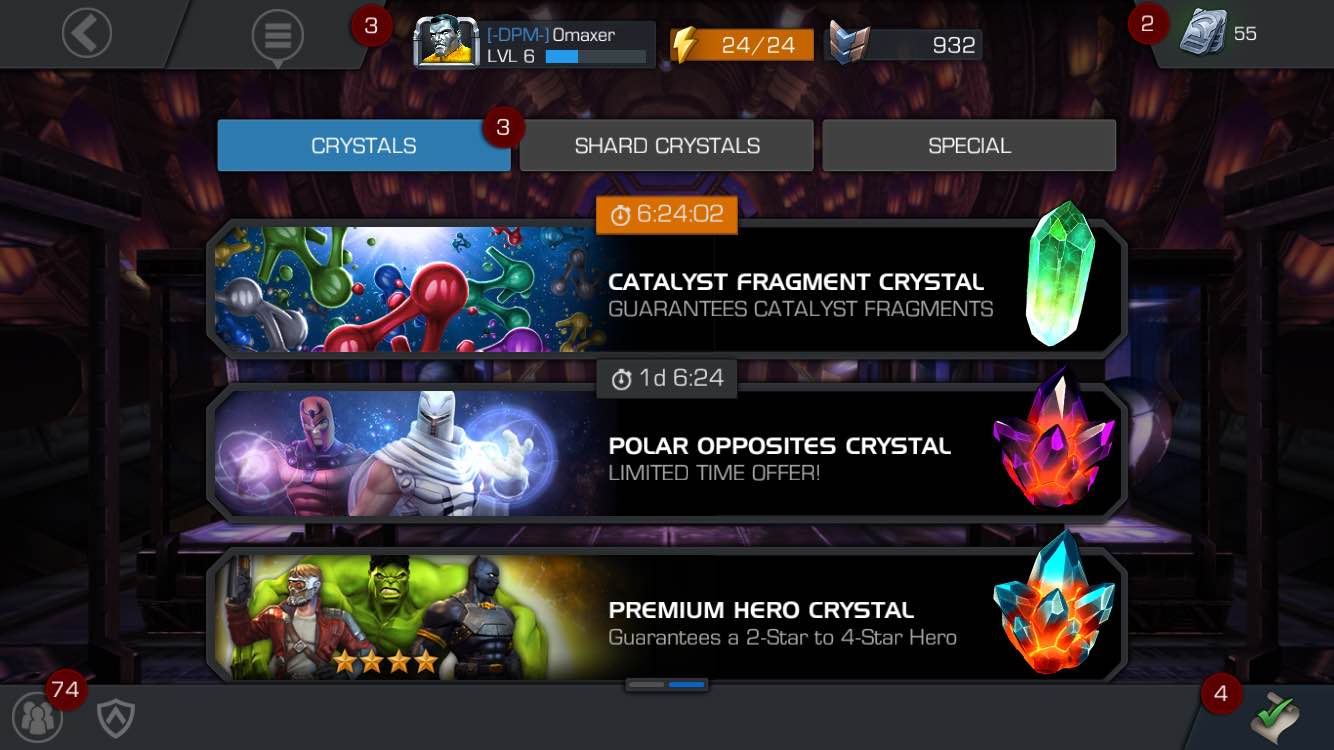
When switching to this screen, the inventory of crystals with vertical scrolling shows the player attractive and visually impressive products.

The player must manually scroll the page down to view or get the crystals won in battle.

The idea here is to send the player to the store / inventory as often as possible. This can be achieved by hourly or daily gifts in the form of crystals. This ensures frequent visits to this page.
From the point of view of UX: under any circumstances, any designer of UX would have made the screen more convenient by sorting the list so that the free and accessible crystals are on top. He would not hide them lower on the list , so that players spend as little effort as possible to find them.
But in this case, the design of the flow is designed to encourage players to visit the store as often as possible and notice expensive items. It uses the psychology of supermarkets and retail. Free items are hidden from the player's view. He must first see expensive items, and then scroll down the page and look for free ("bread and eggs" from the supermarket).
The full article on the UX Marvel Contest Of Champions can be found here .
Conclusion
The strategies outlined above have been used in marketing products and services for centuries, but with the transition to the era of digital and virtual goods, the same robust principles can be integrated into modern products. Thanks to the use of clever UX design, it will not look too annoying.
- The effect of "fake": fixing prices.
- Reciprocity: the psychology of free samples.
- Counter offer: bargaining
- Ownership effect: people attribute more value to what they have.
- Supermarket Psychology: show consumers what they need to see!
The examples shown above relate to mobile games, but can be adapted to any digital applications and services.
Source: https://habr.com/ru/post/318042/
All Articles